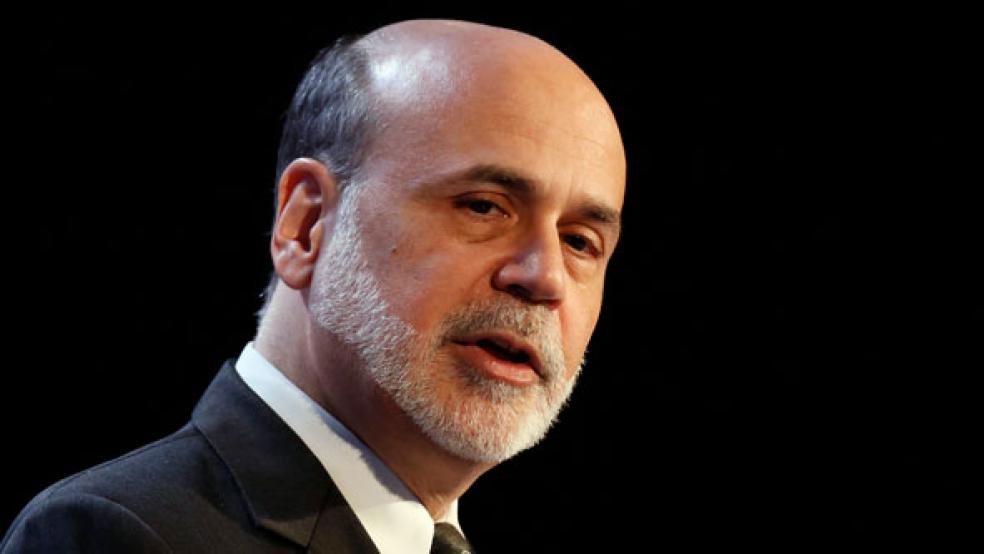The Federal Reserve statement released Wednesday revealed no significant changes to the bank’s bond-buying policies – yet it was momentous nonetheless.
On the one hand, the Fed said it would continue the $85 billion in open-ended monthly purchases of bonds it announced in September, including about $40 billion a month in mortgage-backed securities and $45 billion a month in longer-term Treasuries. That represents an expansion of the bank’s current quantitative easing program and the expiring Operation Twist, which had the Fed extending the duration of its portfolio by buying $45 billion in long-term Treasuries each month while selling the same amount in short-term bonds. The continued purchases are likely to significantly swell the Fed’s $2.8 trillion balance sheet, which has already ballooned by a couple trillion dollars in recent years.
“The Committee remains concerned that, without sufficient policy accommodation, economic growth might not be strong enough to generate sustained improvement in labor market conditions,” the Federal Open Market Committee statement said. “Taken together, these actions should maintain downward pressure on longer-term interest rates, support mortgage markets, and help to make broader financial conditions more accommodative.” Some economists, though, have questioned the economic effectiveness of the Fed’s bond-buying.
The central bank also said it would keep those programs in place until the job market improves “substantially” unless inflation starts to spiral higher. The committee statement also kept the target for the federal funds interest rate between 0 and 0.25 percent, as expected.
On the other hand, the Fed for the first time committed to keep rates extraordinarily low until the economy hits specific criteria: an unemployment rate of 6.5 percent or lower – it fell to 7.7 percent in November from 7.9 percent, largely because 350,000 people stopped looking for work – and inflation projected at 2.5 percent or higher. The bank did not target a specific level of growth in nominal GDP. It had previously promised to keep rates low for a certain period of time, most recently until 2015. In September, the policy-making committee had moved away from a calendar-based policy to one that tied policy more directly to economic conditions. Its statement at the time said it would continue its purchases until labor market conditions improved (so long as inflation remained manageable), but did not specify the level of improvement it sought. The FOMC also said that its monetary policy would stay in place even after the economic recovery showed signs of real strength.
Economists had speculated about likely target numbers and when the Fed might spell out its thresholds, but most did not expect the bankers to adopt those detailed criteria until next year.
That policy change is seen as a victory for Charles Evans, the president of the Federal Reserve Bank of Chicago, who in a speech in Toronto late last month had called for using a 6.5 percent unemployment rate target and a 2.5 percent inflation rate ceiling of sorts. “In the past, I have said we should hold the Fed funds rate near zero at least as long as the unemployment rate is above 7 percent and as long as inflation is below 3 percent. I now think the 7 percent threshold is too conservative,” Evans said. “If we continue to have few concerns about inflation along the path to a stronger recovery, there would be no reason to undo the positive effects of these policy actions prematurely just because the unemployment rate hits 6.9 percent — a level that is still notably above the rate we associate with maximum employment.”
In his speech, Evans also emphasized the importance of setting an inflation threshold based on projections two or three years out, rather than any specific monthly reading. “A threshold based on the forecast for inflation would avoid triggering a policy reaction in response to transitory movements in prices — say, to some temporary swing in energy prices,” he explained. “It would also take into account everything we are seeing in the economy in terms of cost pressures and inflationary expectations — factors that influence the inflation outlook before they show up in actual inflation data. The forecast therefore provides a better safeguard than a backward-looking measure.”
The Fed’s policymaking committee approved the new statement by an 11-1 vote, with only Richmond Fed President Jeffrey Lacker dissenting.



